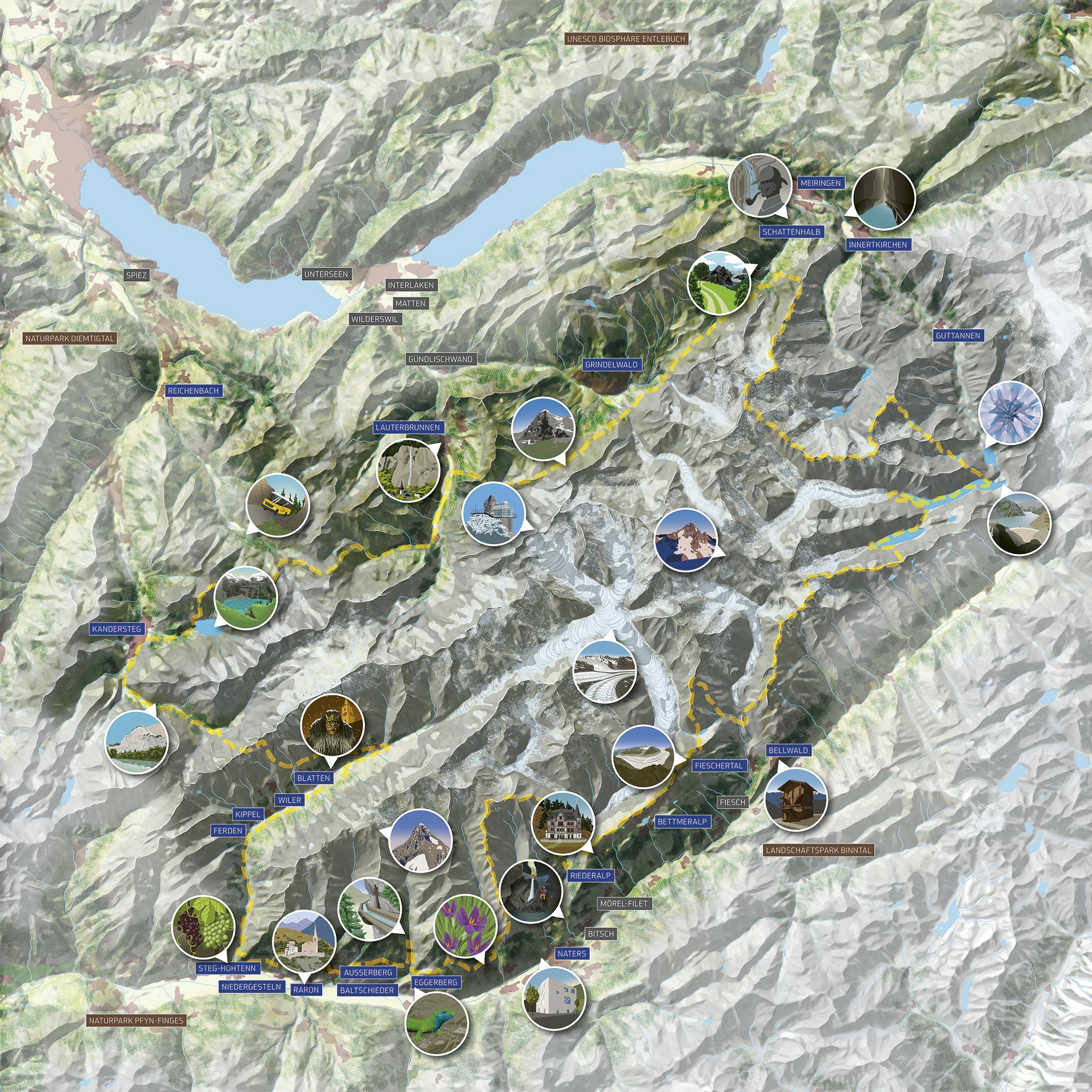World Heritage Site
Description of the property
The core area of the World Heritage property Swiss Alps Jungfrau-Aletsch comprises mainly natural high mountain landscapes. 85 % of the area surpass 2000 m above sea level and 50 mountain summits are above 3500 m, nine even higher than 4000 m. The proportion of unproductive and vegetation free areas amounts to 90 %. The World Heritage property is not or only seasonally inhabited, beside few exceptions (e.g. Research station and railway station Jungfraujoch, huts of the Swiss Alpine Club Hinteres Lauterbrunnental, Lötschberg southern ramp, cattle alps). The agricultural use and the forest management within the perimeter is limited to the border areas contrary to the alpine touristic use.
The UNESCO World Heritage Swiss Alps Jungfrau-Aletsch is an area of the Alpine space with only minor anthropogenic influences. The intact nature surrounded by settlements and small scale cultural landscapes is one of the outstanding characteristic of the natural World Heritage site (IUCN 2001).
Factsheet UNESCO World Heritage Swiss Alps Jungfrau-Aletsch
SELECTION CRITERIA
In the «Operational Guidelines for the Implementation of the World Heritage Convention», four criteria are defined for natural sites to be inscribed as World Heritage properties, from which at least one has to be fulfilled.
According to IUCN (the International Union for Conservation of Nature) the property Swiss Alps Jungfrau-Aletsch fulfills three out of four criteria (Küttel, 1998, IUCN 2001):
Criterion (vii)
The impressive landscape within the property Swiss Alps Jungfrau-Aletsch has played an important role in European literature, art, mountaineering and alpine tourism. The area is globally recognised as one of the most spectacular mountain regions to visit and its aesthetics have attracted an international following.
Criterion (viii)
The property Swiss Alps Jungfrau-Aletsch provides an outstanding example of the formation of the High Alps resulting in a great abundance and diversity of geomorphological features. This most glaciated part of the Alps contains the Aletsch glacier, the largest and longest in western Eurasia, which is of significant scientific interest in the context of glacial history and ongoing processes, particularly related to climate change.
Criterion (ix)
Within its altitudinal range and its dry southern/wet northern exposures, the property provides a wide range of alpine and sub-alpine habitats. Superb examples of plant succession exist, including the distinctive upper and lower tree-line of the Aletsch forest. The global phenomenon of climatic change is particularly well-illustrated in the region, as reflected in the varying rates of retreat of the different glaciers, providing new substrates for plant colonization.

